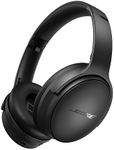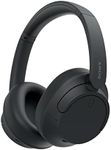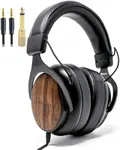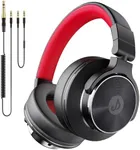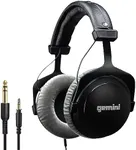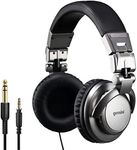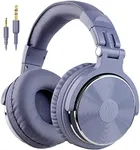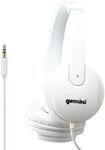Buying Guide for the Best Pro Studio Headphones
Choosing the right pro studio headphones can be a daunting task, but with the right knowledge, you can find the perfect pair to suit your needs. Studio headphones are essential for accurate sound reproduction, which is crucial for mixing, mastering, and recording music. The key is to understand the specifications that matter most and how they align with your specific requirements. Here are the key specs to consider when selecting pro studio headphones and how to navigate them.Frequency ResponseFrequency response refers to the range of frequencies that the headphones can reproduce, typically measured in Hertz (Hz). This spec is important because it determines how accurately the headphones can reproduce the full spectrum of sound, from the lowest bass to the highest treble. A wider frequency response range (e.g., 20 Hz to 20 kHz) is generally better, as it ensures that you can hear all the details in your audio. If you work with genres that have a lot of bass or high-frequency content, look for headphones with an extended range in those areas.
ImpedanceImpedance is the resistance of the headphones to the electrical signal from your audio source, measured in ohms (Ω). This spec is important because it affects the volume and clarity of the sound. Low impedance headphones (below 50 ohms) are easier to drive and can be used with portable devices like smartphones and laptops. High impedance headphones (above 50 ohms) require more power and are better suited for professional studio equipment with dedicated headphone amplifiers. Choose based on your equipment: if you have a powerful amp, high impedance headphones can offer better sound quality.
Driver SizeThe driver is the component inside the headphones that converts electrical signals into sound. Driver size, measured in millimeters (mm), can impact the sound quality, particularly the bass response. Larger drivers (40mm and above) generally produce better bass and a fuller sound, while smaller drivers can be more precise and detailed. If you need headphones for critical listening and mixing, consider larger drivers for a more balanced sound. For detailed work, smaller drivers might be preferable.
Closed-Back vs. Open-BackClosed-back headphones have ear cups that are sealed, preventing sound from leaking in or out. This design is important for recording environments where isolation is crucial. Open-back headphones have perforated ear cups that allow air and sound to pass through, providing a more natural and spacious sound. They are ideal for mixing and mastering in a quiet environment. Choose closed-back for recording to avoid bleed into microphones, and open-back for mixing to get a more accurate representation of your audio.
Comfort and Build QualityComfort and build quality are crucial for long studio sessions. Look for headphones with adjustable headbands, cushioned ear pads, and lightweight materials. This spec is important because uncomfortable headphones can cause fatigue and affect your performance. Durable materials like metal and high-quality plastics ensure longevity. If you spend long hours in the studio, prioritize comfort and build quality to maintain focus and productivity.
Cable Type and LengthThe type and length of the cable can affect your mobility and convenience in the studio. Coiled cables are flexible and can stretch, making them ideal for studio use where you need to move around. Straight cables are less bulky and can be better for stationary setups. The length of the cable should be long enough to reach your equipment without causing clutter. Choose based on your studio layout and how much you need to move around while working.



